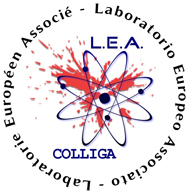Orateur
Anabel Morales Lopez
(INFN-Milano)
Description
The study of the beta-decay process in heavy neutron-rich systems is of main importance to probe the nuclear models used in r-process calculations. Experimental evidence is particularly interesting in nuclei approaching the waiting point A~195, since the r-process nuclei are still inaccessible in laboratory and the beta-decay models used to extrapolate their properties show strong discrepancies in their predictions [1,2].
Here we present the first results of an experiment focused on the investigation of the neutron-rich Tl isotopes, carried out within the “Stopped beam Campaign” of the RISING collaboration at GSI. The nuclei of interest were produced in fragmentation reactions of a relativistic Uranium beam impinging on a thick Be target. The residues were subsequently identified in the magnetic spectrometer Fragment Separator (FRS) and were finally implanted in the RISING Active Stopper [3]. This device consisted of nine Double Sided Silicon Strip Detectors (DSSSD) that recorded the position and time of implantations and beta-electrons. The characteristic gamma-ray transitions of the daughter Pb nuclei were registered using the RISING gamma-ray spectrometer [4], placed in close isotropic geometry around the Active Stopper.
The event-by-event position and time correlations between implantations and gamma-labeled radioactive electrons allowed us to measure the beta-decay half-lives of 211,212,213Tl, as well as the low-energy structure of their daughter nuclei 211,212,213Pb. The comparison of the new lifetimes with the calculations of the nuclear models proposed to describe the r-process provides a significant experimental constraint to their validity near the third r-process abundance peak, confirming previous half-life measurements near the shell closure N=126 [5-7].
[1] P. Möller et al., Phys. Rev. C 67 (2003) 055802
[2] I.N. Borzov, Phys. Rev C 67 (2003) 025802
[3] R. Kumar et al., Nucl. Instr. Meth. A 598 (2009) 754
[4] S, Pietri et al., Nucl. Instr. Meth B 261 (2007) 1079
[5] T. kurtukian et al., Nucl. Instr. Meth A 589 (2008) 472
[6] N. Alkhomashi et al., Phys. Rev. C 80 (2009) 064308
[7] A.I. Morales, PhD thesis. Universidad de Santiago de Compostela, 2011
Auteur
Anabel Morales Lopez
(INFN-Milano)
Co-auteurs
Dr
Andrea Gottardo
(INFN-Legnaro)
Dr
Giovanna Benzoni
(INFN-Milano)
Dr
Jose Javier Valiente-Dobon
(INFN-Legnaro)
Roberto Nicolini
(INFN-Milano)

